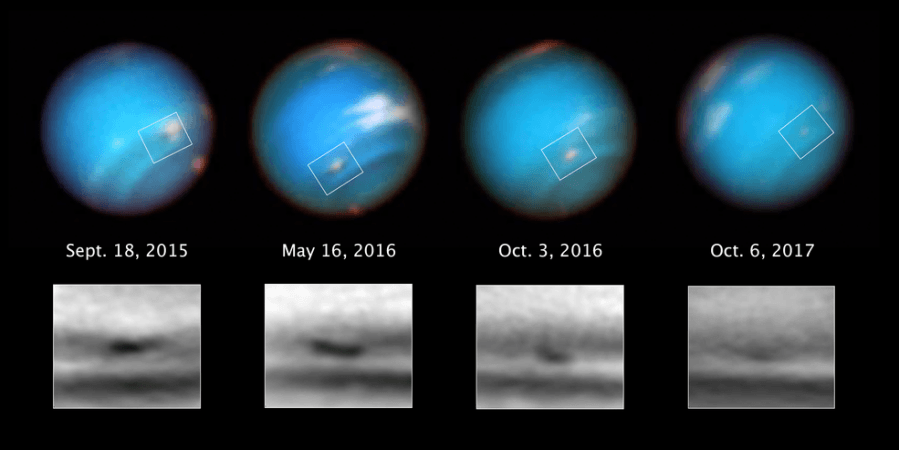
Neptune, known for its incredibly powerful winds, is losing one of its iconic dark storms. And thanks to NASA's Hubble Space Telescope, astronomers have managed to capture the massive dark storm, which was once stretched across the Atlantic Ocean from Boston to Portugal, as it is gradually fading away.
In the late 1980s, NASA's Voyager 2 spacecraft first discovered the mysterious dark storms on Neptune, which is located about three billion miles away from the Earth, and is considered as the farthest known major planet in our solar system. Hubble, which had been tracking these elusive features since then, spotted two dark storms in the mid 1990s, but they soon vanished.
The shrinking dark storm in question, which was first discovered on Neptune in 2015, spins in an anti-cyclonic direction like Jupiter's Great Red Spot (GRS). But what such storms might be containing inside them? According to scientists, the dark spot material seen in the Hubble images may be hydrogen sulfide that smells like rotten eggs.
The latest data provided by Hubble is very significant in helping astronomers better understand Neptune's deep winds as Neptune's dark vortices only last a few years. In comparison, Jupiter's GRS has been visible for at least 200 years now, but it's also predicted to die within two decades.
"We have no evidence of how these vortices are formed or how fast they rotate," Agustín Sánchez-Lavega from the University of the Basque Country in Spain said in a statement. "It is most likely that they arise from an instability in the sheared eastward and westward winds."
There are three main wind jets on Neptune, including one that goes from east to west at the equator, and two others that move eastward around the north and south poles. The anticyclones that form between these jets then pull up dark material from below the clouds.
"No facilities other than Hubble and Voyager have observed these vortices. For now, only Hubble can provide the data we need to understand how common or rare these fascinating neptunian weather systems may be," Michael H. Wong of the University of California at Berkeley said.

















